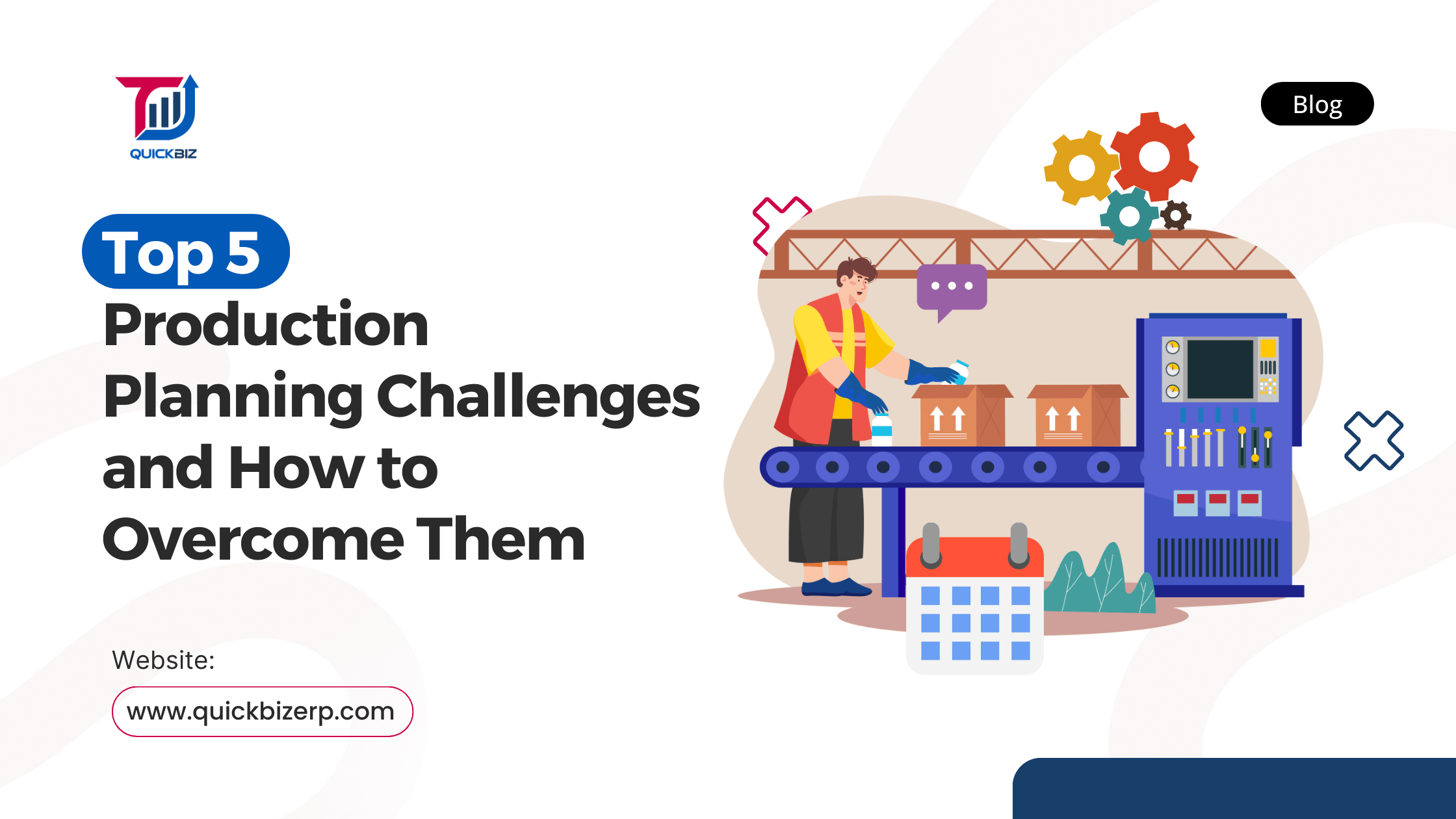Top 5 Production Planning Challenges and How to Overcome Them

Introduction
Production planning is the backbone of efficient manufacturing, directly influencing profitability. According to industry studies, production delays can cost manufacturers up to 20% of their annual revenue. Despite its critical nature, SMEs face significant hurdles in achieving streamlined production due to limited resources, market unpredictability, and operational inefficiencies. This blog delves into five common production planning challenges and provides actionable solutions to overcome them.
Main Content
1. Inaccurate Forecasting
The Challenge:
Poor demand predictions often lead to overproduction, resulting in wasted inventory, or underproduction, causing stockouts and lost sales opportunities.
The Solution:
- Utilize data analytics and AI-powered tools to enhance demand forecasting accuracy.
- Leverage historical data and market trends to predict future demands effectively.
Example:
A mid-sized manufacturer integrated AI-driven demand forecasting into their ERP system, achieving a 25% reduction in excess inventory over six months.
2. Resource Mismanagement
The Challenge:
Inefficient use of manpower, machinery, and materials disrupts production schedules and increases operational costs.
The Solution:
- Adopt resource planning modules within ERP systems to allocate resources efficiently.
- Conduct regular audits to identify and address resource bottlenecks.
Example:
QuickBiz’s BOM (Bill of Materials) module enabled a small enterprise to optimize material usage, reducing waste by 15% and saving significant costs.
3. Supply Chain Disruptions
The Challenge:
Unpredictable delays or shortages from suppliers can halt production lines, causing missed deadlines and customer dissatisfaction.
The Solution:
- Build strong, collaborative relationships with multiple suppliers.
- Use real-time supply chain monitoring tools to identify potential disruptions early.
Pro Tip:
Implement multi-sourcing strategies to reduce dependency on a single supplier and ensure consistent material flow.
4. Quality Issues
The Challenge:
Defects in raw materials or production processes not only waste resources but also damage brand reputation.
The Solution:
- Introduce quality control checks at every production stage, from raw material inspection to final product testing.
- Utilize statistical process control (SPC) techniques to monitor and improve production quality.
Case Study:
A small electronics manufacturer reduced defect rates by 30% after incorporating automated quality control systems into their production processes.
5. Inefficient Workflows
The Challenge:
Disorganized workflows and lack of streamlined processes lead to production delays and increased costs.
The Solution:
- Map out and analyze workflows to identify bottlenecks.
- Implement workflow automation tools within ERP systems to streamline production tasks.
Example:
A mid-sized furniture manufacturer improved their output by 20% by automating repetitive tasks using QuickBiz’s ERP suite.
Conclusion
Production planning is a critical component for manufacturing success, but SMEs often face challenges like inaccurate forecasting, resource mismanagement, and supply chain disruptions. By leveraging advanced tools such as QuickBiz’s BOM module, SMEs can streamline processes, improve resource allocation, and boost overall efficiency.

